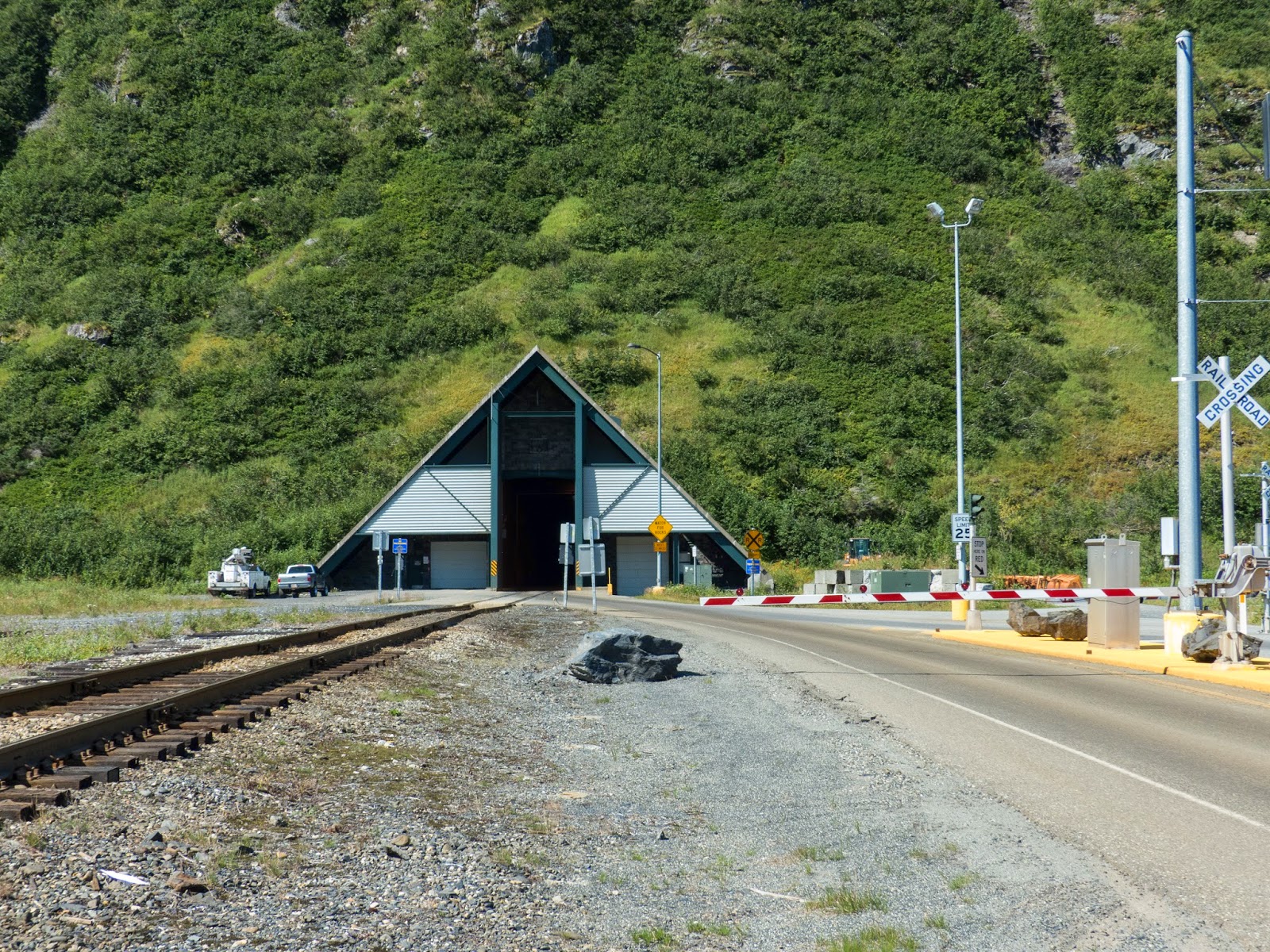Valdez to Whittier August 2nd
The ferry ride through Prince William Sound was very worthwhile.
The 360 degree view of the Chugach
Mountain range and the spouting whales (we think were Orcas) was spectacular.
After a 6 hour ride, we arrived in Whittier which was
originally a US government port and petroleum distribution center during WWII.
The railroad was established to get the fuel from the port to interior Alaska
and they built a tunnel to accommodate the train and Whittier became the
primary debarkation point for troops, cargo and dependents of the Alaskan
command. In 1976, the tunnel was widened
to allow for motor vehicle transportation. This is the only way in and out of Whittier
and it is shared by traffic going east in and west out of Whittier as well as a
train. It is the longest highway tunnel and the longest combined
highway/railroad tunnel in North America at 13,200 feet. There is a computerized lane controlled
staging area at each end of the tunnel and they broadcast the scheduled time
the tunnel will be opening for traffic going your way. It was quite a sight to
see the one lane road with railroad tracks down the middle of it.
 |
| Tracks and road merge into one tunnel |
 |
| Note the back up camera monitor with tow car on dash |
Once we exited the tunnel our next stop was Portage Glacier
still in Whittier and then we headed down the Seward Highway to Seward in
Resurrection Bay.
 |
| Portage Glacier |
Seward
Seward was founded in 1903 by railroad surveyors as an ocean
terminal and supply center for mining, exploration, fishing and trapping
industries. The Iditarod Trail begins
here and was the original mail route to Nome Alaska. Since 1924, the mail has gone by plane and
the Iditarod Trail has become known for the famous dog sled race.
The Kenai Fjords National Park encompasses the glaciers, the
Harding Ice Field and the fjords themselves. We hiked up to the edge of the
Exit Glacier which was almost 3 miles round trip and stopped in the visitor
center to learn more about the area. The Harding Ice Field was so named for
President Warren G. Harding after his visit here in the 1920s. With the rising
popularity of aviation and a newly built trail to the glaciers edge, the Ice
Field became a leading force in creating the Kenai Fjords National Park. The
Park itself is made up of 669,983 acres half of which is the Harding Ice Field. The ice field is 4000 feet thick and half the size of Rhode Island! There are 40 glaciers that come down from it. This is the largest ice field
solely contained within the United States. We were told that a few groups have
hiked across the entire field, but not many.
 |
| Exit Glacier |
 |
| Kate on Trail to Glacier Edge |
Downtown Seward has a thriving port with many large RV
parks- city owned and operated along the waterfront. The tourism business is
quite large as well as the fishing industry.
We camped on the Exit Glacier Road along the Resurrection River..a little quieter and
soothing to hear the roar of the river passing by.
 |
| Resurrection River |



No comments:
Post a Comment